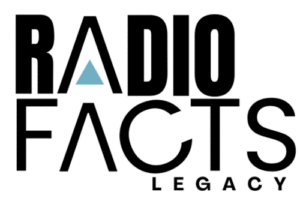 WIRELESS LIFELINE SUPPORTERS RALLY TO MAKE THE CASE FOR FEDERAL PROGRAM AIDING TRANSITION FROM WELFARE TO WORKOnly About a Third of Eligible Low-Income Americans Are Currently Enrolled in Wireless LifelineWASHINGTON, D.C. ““ September 15, 2011 ““ A wide cross section of consumer, senior and low-income groups are joining “Keeping Americans Connected to Opportunity””(KACO), a Facebook-based campaign at https://www.keepingamericansconnected.org devoted to supporting the federal wireless Lifeline program.Under the Lifeline program for wireless, eligible low-income Americans are provided access to telecommunications services via a cell phone with a certain number of minutes each month. Studies have shown that wireless Lifeline helps eligible low-income individuals either find work or keep their existing jobs.Advertisements announcing the launch of KACO are appearing this week in The Hill, Roll Call, Politico and CQ. To see one of the ads, go to https://on.fb.me/pK5beS.The rapidly expanding roster of groups already supporting Keeping Americans Connected With Opportunity include Consumer Action, the Alliance for Generational Equity, the Alliance for Retired Americans, Community Action Partnership, National Consumers League and the Maryland Consumer Rights Coalition. Additional organizations signing on to KACO will be announced next week.KACO Campaign Coordinate Maureen Thompson said: “Lifeline connects Americans to opportunity and helps people of limited resources make the transition from welfare to work. Without Lifeline, millions of Americans couldn’t afford basic phone service. Lifeline connects needy Americans to employers, health care providers, emergency services and family.
WIRELESS LIFELINE SUPPORTERS RALLY TO MAKE THE CASE FOR FEDERAL PROGRAM AIDING TRANSITION FROM WELFARE TO WORKOnly About a Third of Eligible Low-Income Americans Are Currently Enrolled in Wireless LifelineWASHINGTON, D.C. ““ September 15, 2011 ““ A wide cross section of consumer, senior and low-income groups are joining “Keeping Americans Connected to Opportunity””(KACO), a Facebook-based campaign at https://www.keepingamericansconnected.org devoted to supporting the federal wireless Lifeline program.Under the Lifeline program for wireless, eligible low-income Americans are provided access to telecommunications services via a cell phone with a certain number of minutes each month. Studies have shown that wireless Lifeline helps eligible low-income individuals either find work or keep their existing jobs.Advertisements announcing the launch of KACO are appearing this week in The Hill, Roll Call, Politico and CQ. To see one of the ads, go to https://on.fb.me/pK5beS.The rapidly expanding roster of groups already supporting Keeping Americans Connected With Opportunity include Consumer Action, the Alliance for Generational Equity, the Alliance for Retired Americans, Community Action Partnership, National Consumers League and the Maryland Consumer Rights Coalition. Additional organizations signing on to KACO will be announced next week.KACO Campaign Coordinate Maureen Thompson said: “Lifeline connects Americans to opportunity and helps people of limited resources make the transition from welfare to work. Without Lifeline, millions of Americans couldn’t afford basic phone service. Lifeline connects needy Americans to employers, health care providers, emergency services and family.
The Lifeline program is not “˜political;’ it has always enjoyed broad bipartisan support. Lifeline was establid by the Federal Communications Commission under the Reagan Administration and modified under a Republican-controlled Congress in 1996.”Other key facts about wireless Lifeline include the following:* Cutting the Lifeline program won’t reduce the deficit — not even by a penny. Zero federal tax dollars are used to fund Lifeline.* Less than a sixth of Universal Service Funds (USF) funds (16 percent) are used to support Lifeline.* You must be a low-income person to be eligible to participate in Lifeline. Lifeline eligibility requirements vary from state to state, but in most instances eligible low-income individuals have an income that is at or below 135 percent of the poverty line, or if they qualify for one of the following programs: Medicaid, Food Stamps, Supplemental Security Income, Federal Public Housing Assistance, Low-Income Home Energy Assistance Program, Temporary Assistance for Needy Families or the National School Lunch Program’s Free Lunch Program.* Only about one-third of eligible U.S. households are enrolled in Lifeline. A total of 8.6 million Americans received Lifeline benefits in 2009. Nationwide, only six states — Alabama, Alaska, Georgia, North Carolina, Oklahoma and Virginia — had Lifeline participation rates that exceeded 50 percent of eligible households.




